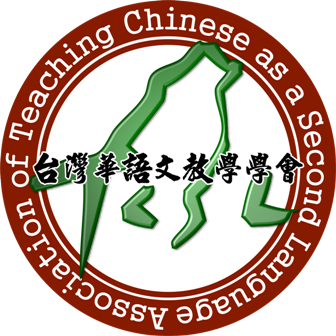目錄
Table of Contents
- 「國際漢語」概念的提出和發展 洪歷建、徐慧
The Concept of Teaching Chinese as an International Language by Lijian Hong, Hui Xu
- 摘要
本文描述全球語境下「國際漢語」這一新概念的起源與發展,討論「國際漢語」與其他漢語國際教育概念的異同,以及有關此概念的政策與理論依據。本研究根據聯合國關於少數民族語言權利的觀點,並借鑒有關澳大利亞「國家語言政策」的理論與實踐,以及「國際英語」的相關研究,將國際語言學界的相關理論引入漢語的國際教育研究領域,並以新的、全球化的思維替代傳統的對外漢語教育觀念,以便更好地理解和發展作為「國際性語言」的漢語。
This paper discusses the origin and the development of the new concept of Teaching Chinese as an International Language. It discusses the similarities and dissimilarities between this concept and other concepts that concern the global education of Chinese language and culture. The discussion involves the policies and theories that support the new concept, which include UN’s position on the protection of the linguistic rights of the minority peoples, Australia’s National Policy on Languages and researches in the concept of Global English. The paper attempts to introduce theories and concepts of international linguistic studies into the research and global education of Chinese language. It aims to replace our traditional understanding of teaching Chinese for foreigners with a new concept of global perspective so that we will be able to understand and develop Chinese as an international language.
- 臺美兩地華語教師之任務型教學認知理解與推動現況研究 曾妙芬、鍾鎮城
Chinese Language Teachers’ Perceptions and Implementation of Task-based Language Teaching in Taiwan and the US by Miao-fen Tseng, Chen-Cheng Chun
- 摘要
任務型教學雖為目前華語教學的主流方法之一,但在應用上各教學現場常存有差異。本研究探討臺灣及美國兩地華語教師對任務型教學的認知理解,以及在操作執行任務活動時的觀點與信心程度。受試者包含兩地大學的華語教師共292位,採線上問卷方式蒐集資料,並以費雪精確檢定(Fisher’s Exact Test)為檢測工具。結果顯示,兩地大學華語教師對任務型教學皆有適當的認知理解,但程度上有所不同,在執行任務活動的觀點上也有顯著差異。另外,兩地教師在執行任務型教學活動的自我信心程度上均呈現高度信心表現,但在不同任務項目有顯著差別。本文最後回應Thomas(2015)弱式版本(weak version)之任務型教學論點,以突顯臺美兩地任務型教學因地制宜之操作彈性。
Task-based language teaching (TBLT) is a mainstream language teaching method in the field of teaching Chinese as a second/foreign language (TCSL/TCFL). However, there is considerable variation in classroom application. This study investigates perceptions, perspectives, and confidence levels of TCSL/TCFL teachers in Taiwan and the United States who implement TBLT in their classrooms. An online survey was administered to 292 TCSL/TCFL teachers at colleges or universities, and Fisher’s Exact Test was used to statistically analyze survey responses. Results showed that TCSL/TCFL teachers in both groups demonstrated appropriate understanding of TBLT; however, the groups differed significantly in degrees of understanding and perspectives on implementation. Furthermore, although both Taiwanese and U.S. teachers were confident in task implementation, their confidence levels differed in various aspects. Responding to the argument and approach of Thomas (2015), the study verifies the applicability of the weak TBLT version and flexibility of its implementation in Taiwan and the United States.
- Mnemonics in the Chinese L2 Lexicon by Jerry Packard
學習華語為二語的詞語記憶術 Jerry Packard
- 摘要
This paper proposes three mnemonic teaching and learning strategies that exploit working memory to make Chinese L2 vocabulary easier to store and retrieve. These strategies follow from experimental results demonstrating that the component of working memory known as Focus of Attention (FA) is as robust in second-language learners as it is in native speakers. The first strategy involves utilizing the natural collocation inherent in Chinese word and phrase content. The second strategy takes advantage of the redundant listing of tones in the Chinese lexicon. The third strategy exploits the well-known homophony inherent in Chinese lexical items. Taken together, these three mnemonic devices may be considered information ‘handles’ that the Chinese language is especially equipped to provide. The information can be used by L2 learners of Chinese to improve their lexical storage and retrieval capability.
本文提出三種利用工作記憶進行的記憶術教學與學習策略,以便使華語詞語對二語學習者更容易儲存與提取。此策略源自近年的實驗,結果顯示工作記憶中的注意力焦點在二語學習者腦中運作的穩健性與母語者相同。第一種策略運用華語詞語與詞組內容中固有的自然搭配;第二種策略利用額外加上的華語詞語聲調標示;第三種策略使用華語詞語中的固有同音詞。綜合而言,這三種記憶機制可視為華語特有的訊息「處理裝置」,華語的二語學習者能加以運用並藉此改善他們的詞語儲存與提取能力。
- 華語作為第二語言泰籍學習者聲調之感知研究 陳春美
Tone Perception of Thai-Speaking Second Language Learners of Mandarin Chinese by Chun-Mei Chen
- 摘要
本論文探討華語作為第二語言泰籍學習者對於華語聲調感知的習得歷程,根據華語學習者聲調聽辨感知的追蹤研究,進行華語作為第二語言聲調感知習得的分析。本論文研究對象包含臺灣及泰國地區的泰籍華語學習者共計30名,接受本研究的聲調測試與追蹤。研究結果顯示,在學習時數相同的條件下,臺灣地區的泰籍華語學習者在華語第一聲(高平調)、第三聲(降升調或低調)、第四聲(降調)方面的感知準確率高於第二聲(升調),整體聲調聽辨感知準確率優於泰國地區的華語學習者,證實華語學習者留學目標語地區的經驗會強化泰籍華語學習者的華語聲調感知習得。本研究感知實驗結果支持「語音學習模式」(Flege 1995),並提出以華語課室溝通式情境互動聲調練習,改善泰籍學習者對華語聲調第二聲感知的偏誤。
This study investigates the tone perception of Thai-speaking second language learners of Mandarin Chinese. Thirty Thai-speaking learners of Mandarin Chinese from two groups (Study-Abroad Group and At-Home Group) participated in the longitudinal study in Taiwan and Thailand. Using a pre-test-post-test design, it compared the effects of study abroad on the accuracy rate of Mandarin tonal perception of Thai-speaking learners of Mandarin Chinese. The results showed that most Thai learners of Mandarin Chinese in the Study-Abroad Group perceived Mandarin level tone (Tone 1), low falling-rising tone (Tone 3) and falling tone (Tone 4) more accurately. Study-Abroad Group outperformed At-Home Group on the tonal perception tests. On the other hand, error tokens of Tone 2 from perception tests were reduced in the Study-Abroad Group, after 24 hours of studying Mandarin in Taiwan. Findings from the perception tests support the Speech Learning Model (Flege 1995). This study suggests that communicative tonal drills and explicit phonetic instruction in Mandarin classroom interactions have effects on the tonal perception accuracy of second language learners of Mandarin Chinese.
- 義素為本的詞語教學—以關鍵義素組構詞語網絡 歐德芬
Sememe-based Teaching of Word Meanings—Word Network Constructed with Key Sememes by Te-Fen Ou
摘要
提高華語詞彙素養以及提升詞語使用等級,是中級以上華語學習者提高語言能力的關鍵,因此本文基於聯結理論提出透過義素與詞語之鏈結,以關鍵義素組構詞語網絡進行華語詞語學習。本研究以組詞率高的義素「開」為主體,透過資料庫得出義素「開」的詞語,再由詞頻次數及語料庫例句確認一組具有華語優先學習價值「開」的複合詞,復以認知語言學的語法連綿性導入語義連綿性,分析出「開」具有代表性的特徵屬性,並勾勒4個「開」的意象圖式(image),再據以分析「開」於複合詞中的不同義素。分析結果得出「開」具有6個不同義素,再以之為關鍵義素使「開」的43筆複合詞得以歸併為六組詞語網絡,最後提出詞語網絡教學原則,以供華語教師及教材編撰者參考。
One of the main ways of enhancing the language proficiency of Chinese learners above the intermediate level is to assist them in improving their Chinese vocabulary literacy and usage level. Thus, based on the connection between sememes and words advanced in the Connectionism theory, this study proposes that word teaching can be conducted by using a word network constructed with key sememes. This study retrieves words with the high-frequency sememe, kai, from the corpus, and examines word frequency and sentence use in order to determine a set of kai-compounds that are worth learning in an earlier stage. This study then integrates the syntax-lexicon continuum in cognitive linguistics with the semantic continuum, indicates the attributes of kai, presents its 4 images, and then analyzes the sememes of compounds with kai. The results show that kai has 6 sememes, which can be used to categorize 43 kai-compounds into 6 word networks. Finally, a teaching guide on the 6 word networks is provided as a reference for Chinese teachers and textbook compilers.
